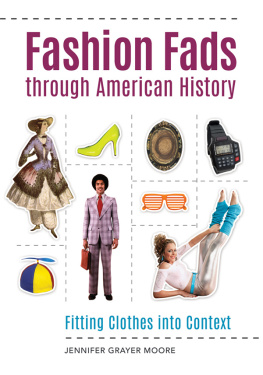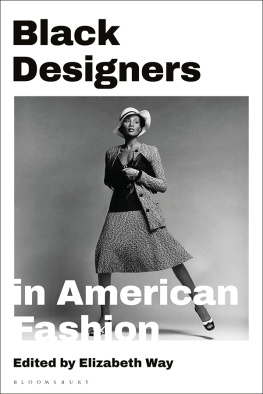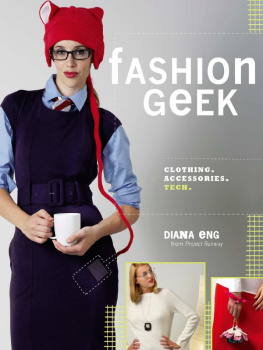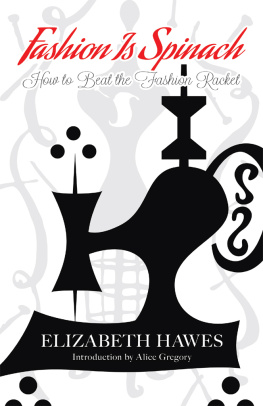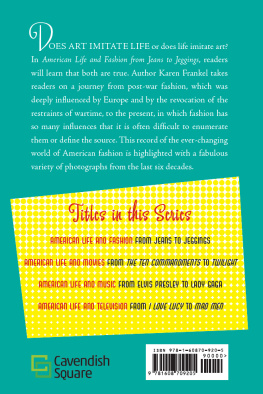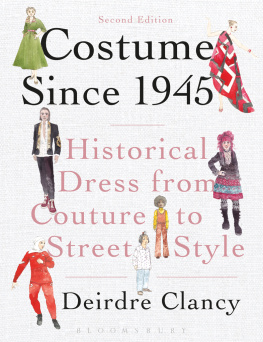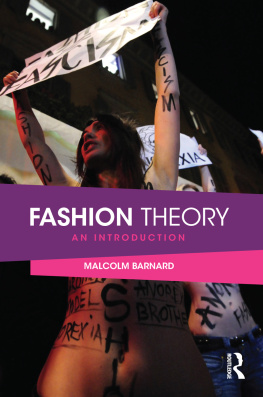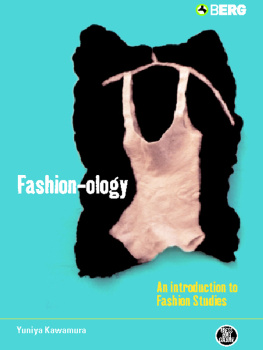Fashion Fads through American History
Fashion Fads through American History
Fitting Clothes into Context
Jennifer Grayer Moore

Copyright 2016 by ABC-CLIO, LLC
All rights reserved. No part of this publication may be reproduced, stored in a retrieval system, or transmitted, in any form or by any means, electronic, mechanical, photocopying, recording, or otherwise, except for the inclusion of brief quotations in a review, without prior permission in writing from the publisher.
Library of Congress Cataloging-in-Publication Data
Moore, Jennifer Grayer.
Fashion fads through American history : fitting clothes into context / Jennifer Grayer Moore.
pages cm
Includes bibliographical references and index.
ISBN 978-1-61069-901-3 (hardback : acid-free paper) ISBN 978-1-61069-902-0
(electronic)1.FashionUnited StatesHistory.2.Clothing and dressUnited StatesHistory.3.FadsUnited StatesHistory.4.United States--Social life and customs.5.Popular cultureUnited StatesHistory.I.Title.
GT605.M66 2016
391.00973dc232015023612
ISBN: 978-1-61069-901-3
EISBN: 978-1-61069-902-0
201918171612345
This book is also available on the World Wide Web as an eBook.
Visit www.abc-clio.com for details.
Greenwood
An Imprint of ABC-CLIO, LLC
ABC-CLIO, LLC
130 Cremona Drive, P.O. Box 1911
Santa Barbara, California 93116-1911
This book is printed on acid-free paper 
Manufactured in the United States of America
Contents
The primary purpose of this book is to document fashions that are typically overlooked by sources that survey the broad historical record of dress practices. Surveys of historical fashion purposely and rightfully document and explain the long-lasting fashion trends that may be said to define the visual landscape of dress in a given period. Fads, in contrast to trends, are shorter-lived, potentially not as widespread across demographics of age and income, and may be viewed as oddities or outliers, especially once their period of popularity has passed. Therefore, this book fills a gap in the existing literature by documenting and highlighting important but overlooked fashion phenomena. Though most fads had short spans of popularity (or relatively short spans given their time period), fashion fads are culturally significant. Although fashion fads may be outrageous in appearance, may be difficult or unwieldy to wear, may break rules of decorum, or may otherwise seem to be out of step with the culture at large, fashion fads are emblematic of attitudes and ideas that existed in an historical period. Fads have the special ability to reveal feelings, dispositions, and values from past time periods that might not be clearly revealed through other historical source material. Therefore a book dealing with fashion fads is an excellent tool for the student or scholar who is seeking to develop an integrated point of view about the historical past.
The content of this book should be useful to those who are interested in the complexities and nuances of dress practices but should also be useful to the larger audience of those who are interested in the general cultural characteristics of an historical era, for dress is both expressive of personal identity and evocative of the disposition of a larger population in a given time period. The tone and manner in which the essays are written should also allow for a broad audience ranging from the secondary school student to the more advanced scholar.
The fads that are included range in date of introduction from the middle of the nineteenth century to recent years in the twenty-first century. Greater emphasis is given to approximately the last one hundred years because a greater number of fads have existed since production and communication of fashion were impacted by modern mass production techniques and modern mass media outlets. While the majority of the fads are related to womens dress, which is most susceptible to quick and dramatic fashion change, fashion fads for men and youths are also covered to the extent that the historical record provides.
How to Use This Book
The arrangement of content is designed to support the research interests of a wide variety of readers. The book begins with an introduction that provides the reader with necessary background information and theoretical constructs. The fads themselves are organized in two ways. First, the text organizes the fads thematically. Some themes are based on general historical trends including the influence of mass media, the impact of new technologies, the development of new kinds of materials, and the adoption of dress ideas from abroad. Other themes are more specific to the issue of dress including unusual developments in silhouette, outlandish and surprising developments in hair and makeup, and the repurposing or re-contextualizing of existing clothing and accessories. The thematic categories facilitate the exploration of recurring tendencies within the realm of fashion fads and enable the reader to make connections and see patterns across time.
Within each thematic category, the fads are arranged chronologically. This arrangement allows readers to find fads of a given time period and to see progression over time. This arrangement is also especially useful to the reader who is researching an historical period and who is looking for cultural factors and details to support his or her understanding of that era.
Each section contains a series of essays that describe and discuss fashion fads that existed in America in the nineteenth and twentieth centuries. Fads are inclusive of apparel, accessories, hairstyles, and makeup for men, women, and children. Each essay describes the fad in detail and includes information such as when the fad existed and who adopted it. Furthermore a context is provided for why a fad emerged. Contexts vary and include concepts such as technological innovation, mass media, and designer collections. Evolution of the fad (change in appearance or use over time), decline, and (in some cases) resurgence in later decades is also addressed. Finally the text demonstrates the greater meanings that can be found in these fads, such as indicating cultural or technological change.
Each essay includes references for further reading. Citations from magazines, newspapers, and other popular contemporary sources provide readers with more information about how the fad was viewed in the period it was introduced. Wherever it is possible, the list of citations will also include articles, monographs, and chapters of scholarly works. These references will enable the reader to broaden and deepen his or her understanding of the fashion fad and may provide the crucial first steps to a larger research project.
The content compiled in this book cannot be found in any other single source. The introductory essay provides a rationale for studying fads and provides a new critical lens for understanding fads as unique from other kinds of fashion phenomena. This new contribution to fashion scholarship will facilitate the readers deeper understanding of the rest of the texts content. Each fad entry within the book also represents a useful contribution to fashion history as only a very few of the fads contained herein have been given a detailed study and concise review in a scholarly source. Some information about fads exists on the Internet on blogs and in social media such as Pinterest, but such sources are insufficient and fraught with problems related to documentation, specificity, and accuracy. While such sources may prove useful, interesting, and inspiring in some way, they lack the proper vetting and sourcing that the serious student of history requires. This book fills that gap and provides the tools for the curious reader to continue to explore the subject further. It is hoped that this book will prove itself to be informative, entertaining, and inspiring of further investigations.

